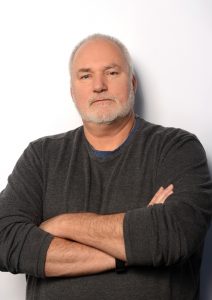Burger King’s Moldy Whopper: The Future Of ‘Viral Marketing’ In A Post- Coronavirus World?
It’s impossible to forget the first time you saw Burger King’s “Moldy Whopper” spot – a 45-second time-lapse video of a mold-infested Whopper that was produced not by a competitor, but by Burger King itself.
Oh, did that Moldy Whopper make an impact: AdWeek revealed the Moldy Whopper hashtag received 21 million impressions, while mentions of Burger King increased by more than 500%. As a PR professional devoted to protecting our clients’ brands, it was astonishing to see Burger King produce a video that showed its food decomposing. As our world grapples with the COVID-19 pandemic, we thought it would be a relief to escape – just for these few minutes – to a recent campaign that (in its reveling in moldy growths) would be unthinkable to launch now in this current era of the coronavirus.
For marketers, the Burger King campaign sparked a frenzy of questions – what’s the gap between delightfully bold and a campaign too far? Is inviting your customers to watch your product rot on camera good for a brand? Is this campaign – and other envelope-pushing restaurant ads such as Wieden+Kennedy’s “Return of the Colonel” work for KFC – a sign of trends to come?
Here are my reactions to viewing the Moldy Whopper:
- I will never eat another Whopper again.
- I admire the three agencies that created the spot – and, incredibly, got this 45-seconds of brand destruction approved by their client. Absolutely no one associated with the Burger King ad played it safe – and we love that.
- I had no idea that there were preservatives in Burger King products. But now that I know: I’m thinking, if preservatives are bad for me, why did Burger King allow me to consume them for years?
- I respect the Burger King executives who approved the mad idea of positioning a fat, salt, sugar and calorie-filled food item as “real food,” by showing it rotting.
- I love the use of Dinah Washington’s song, “What A Difference A Day Makes” as the soundtrack for the fungal assault on the burger. Miss Dinah is back!!
We checked in with three of our favorite brand experts for their opinions on the Moldy Whopper – Persuasion Arts and Sciences’ creative director Dion Hughes; crisis communications counselor Jon Austin; and Preston Kelly chief creative officer Chris Preston. Here’s what they had to say in interviews just before the COVID-19 pandemic erupted in the US:
On Whopper Flashbacks and the Attention Economy

Jon Austin, crisis communications counselor
“First, and I think I speak for millions of people who otherwise think well of the Whopper… eww, gross,” responded Austin. “You can’t un-see that image, and it’ll be a while before I can eat a Whopper without getting flashbacks. But, if you believe we live in an attention economy where the most important key to success is getting a foothold in people’s minds, regardless of whether it’s good for bad, then this is way more successful than a straightforward announcement about preservatives.”
“My feelings about the Moldy Whopper are contradictory” added Hughes. “For a start, I admire it greatly, as it’s of the very small percentage of work that gets noticed and talked about. Nobody writes about the 99 percent of work that is dull, condescending, ugly, thoughtless or inane.”
And yet – Marketing Dive found that over 25% of viewers of the ad were turned off to purchasing from Burger King. “Anytime a negative score is greater than single digits, our clients believe an ad is a failure,” explained Preston. “25% visceral negativity is an unmitigated disaster.”

Chris Preston, Chief Creative Officer at Preston Kelly
On Brave Advertising and the Mold Apocalypse
“I believe in work that makes a positive emotional connection – courage and originality are in our agency values, so I’m pre-programmed to applaud brave work,” continued Preston. “In the case of this mold apocalypse, however, I think the emotional power is 100% negative, and the basic human survival reaction to rot cannot be overestimated.”
Austin wondered which audience cares about preservatives. “Among the universe of people who eat fast food – of which I’m an enthusiastic member – I’m hard pressed to believe any of us are going to start eating more Whoppers because they have less preservatives. Burger King’s customers are not eating there because it’s a healthier choice.”
On Video vs. Stills and the Road to Decay
Dion Hughes raised the point that one’s impression of Burger King’s campaign varied depending on if you watched the video or saw the still images of the Whopper. “I’ll admit being grossed out by the still images, but watching the actual video, it does have more nuance to it, starting off with a very delicious looking burger before descending down the dark road to decay,” said Hughes. “If media critics are judging the campaign based upon a still image, dig a little deeper.”
“For me and my people – the folks whose passenger side footwells are full of fast food wrappers and other residue,” concluded Austin, “we suspect preservatives are actually a benefit. While it hasn’t happened recently, a day-old cheeseburger has been an acceptable meal for me on occasion.”
On The Real Audience For an Agency’s Ad
But wait – were consumers really the target audience for the Moldy Whopper campaign – or was it the BK franchisees? We’re reminded of Fallon’s “Bob Johnson” ad for Holiday Inn, featuring a transsexual who invested in gender reassignment surgery to demonstrate the chain’s $1 billion in renovations. Was the trans spot going to drive travelers to a Holiday Inn? No matter. The hotel’s franchisees adored Fallon’s spot: the International Association of Holiday Inns reported that franchisee phone calls were 5 to 1 in favor of the ad..

Dion Hughes, Creative Director at Persuasion Arts and Sciences
So could the Moldy Whopper be seen as a success in keeping Burger King franchisees happy, while turning the stomachs of some hungry consumers?
“I did a quick poll of people engaged with burgers,” said Hughes. “My son, who eats at Burger King once a week, says he couldn’t care less. He thinks it’s gross but funny, and it resonated with him. A friend of mine, a former marketing leader in the restaurant industry, thinks it’s a self-inflicted wound. Who’s right? Maybe both. I think as marketers, we’d all do better by our clients to do work that runs the risk of being controversial. If this one idea backfires, so what? It’s a small part of Burger King’s larger effort. The fail would be in not trying.”
Our agency’s final take-away?
It’s time for more brands to embrace this trend of attention-grabbing, risk-taking marketing, even while being careful of tone given the current coronavirus environment. But first – ensure that you truly know your target audience and their appetite for bold rather than moldy ideas!

